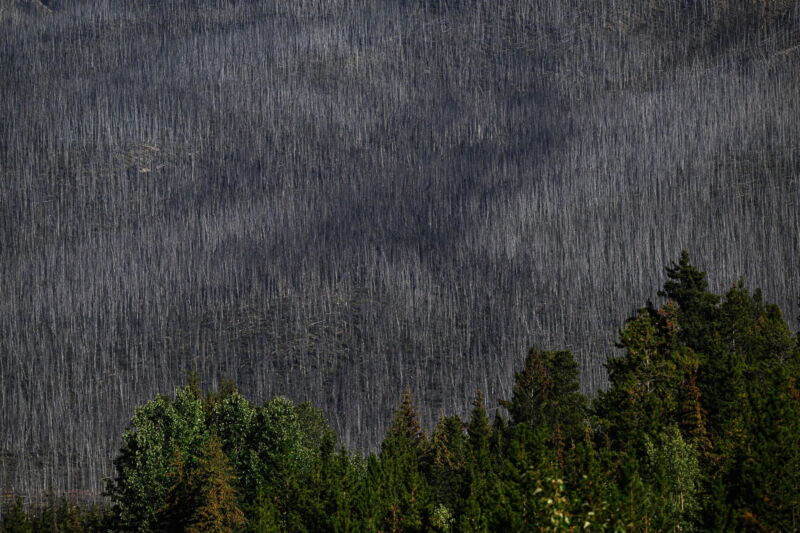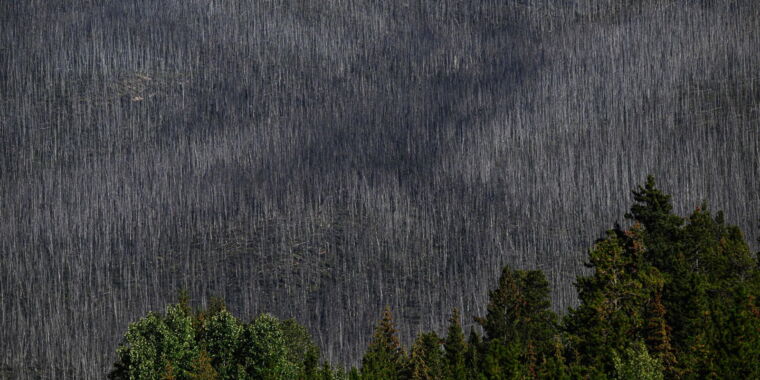
Ed Jones/Getty Images
The Far North is both a huge carbon sink and a powerful environmental time bomb. The region stores a huge amount of CO2 in boreal forests and underlying soils. Organic peat soil, for example, covers only 3 percent of the Earth’s land area (there is some in tropical regions, too), yet it contains a third of terrestrial carbon. And Arctic permafrost has trapped thousands of years’ worth of plant matter, preventing putrefaction that would release clouds of planet-warming carbon dioxide and methane.
But in a few recent papers, scientists have found that wildfires and human interference are reducing the ability of northern ecosystems to sequester carbon, threatening to convert it to carbon. sources. That, in turn, will accelerate climate change, which is already warming the Arctic four and a half times faster than the rest of the world, releasing even more carbon — a gnarly feedback loop.

In fact, more than 100 wildfires are currently raging in Alberta, Canada, forcing nearly 30,000 people to leave their homes – an “unprecedented situation” in the region. The acreage burned annually in Canada has doubled since the 1970s, says Mike Flannigan, a fire scientist at Thompson Rivers University. (He was not involved in any of the new studies.) “A warmer world means more fire,” he says. “As temperatures rise, the atmosphere becomes very efficient at sucking up moisture from dead fuels. So it means more fuels are available to burn, leading to high-intensity fires that are difficult to impossible to extinguish.”
Northern boreal forests are the largest terrestrial biomes in the world. When they burn, they release greenhouse gases from both vegetation and carbon-rich soils, which was quantified in the first new paper, released in March. In fact, burning boreal forests spew out between 10 and 20 times more carbon than fires in other ecosystems. Typically, the fires are responsible for 10 percent of global fire CO2 emissions per year, but in 2021 they contributed 23 percent, thanks to severe heat waves and drought.
“We are facing a dangerous positive trade-off between climate and boreal fires,” said lead author Bo Zheng of China’s Tsinghua University. “The slow recovery of soil microbial communities in forests after extreme wildfires weakens carbon sinks and makes it difficult for them to fully absorb the large amount of carbon dioxide released during combustion.” That, Zheng adds, “will increase the concentration of carbon dioxide in the atmosphere and promote global warming, further increasing the likelihood of extreme wildfires.”

